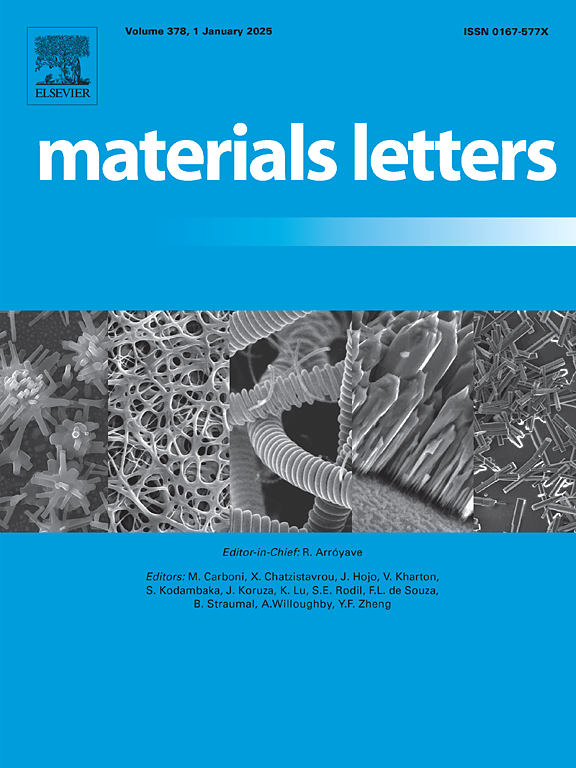Fabrication of triple-doped ceria materials for LT-SOFCs
IF 2.7
4区 材料科学
Q3 MATERIALS SCIENCE, MULTIDISCIPLINARY
引用次数: 0
Abstract
The NaOH-assisted co-precipitation approach was utilized to synthesize nano-crystalline Ce0.80Sm0.09Gd0.09M0.02O2-δ (M = Bi3+, Zn2+) electrolytes. The structural and morphological parameters were examined using X-ray diffraction and scanning electron microscopy. The samples had a relative density of > 97 %, demonstrating a packed structure. Impedance spectroscopy was employed to analyze the ionic conductivity of samples sintered at 900 °C and 1000 °C. The Bi-doped sample has enhanced ionic conductivity compared to its Zn-doped counterpart. Bi-doped samples sintered at 900 °C revealed comparable conductivity to undoped samples sintered at 1200 °C. This shows that Bi3+ can boost ionic conductivity while minimizing sintering temperature, and that Bi-doped ceria-based materials might assist as effective electrolytes in LT-SOFCs.
LT-SOFCs用三掺铈材料的制备
采用naoh辅助共沉淀法合成纳米晶ce0.80 sm0.09 gd0.09 m0.020 o2 -δ (M = Bi3+, Zn2+)电解质。利用x射线衍射和扫描电镜对其结构和形态参数进行了检测。样品的相对密度为>;97%,显示了一个填充结构。采用阻抗谱法分析900℃和1000℃烧结样品的离子电导率。与锌掺杂样品相比,双掺杂样品具有增强的离子电导率。在900°C烧结的双掺杂样品的电导率与在1200°C烧结的未掺杂样品相当。这表明Bi3+可以在降低烧结温度的同时提高离子电导率,并且Bi3+掺杂的二氧化铈基材料可能有助于作为lt - sofc的有效电解质。
本文章由计算机程序翻译,如有差异,请以英文原文为准。
求助全文
约1分钟内获得全文
求助全文
来源期刊

Materials Letters
工程技术-材料科学:综合
CiteScore
5.60
自引率
3.30%
发文量
1948
审稿时长
50 days
期刊介绍:
Materials Letters has an open access mirror journal Materials Letters: X, sharing the same aims and scope, editorial team, submission system and rigorous peer review.
Materials Letters is dedicated to publishing novel, cutting edge reports of broad interest to the materials community. The journal provides a forum for materials scientists and engineers, physicists, and chemists to rapidly communicate on the most important topics in the field of materials.
Contributions include, but are not limited to, a variety of topics such as:
• Materials - Metals and alloys, amorphous solids, ceramics, composites, polymers, semiconductors
• Applications - Structural, opto-electronic, magnetic, medical, MEMS, sensors, smart
• Characterization - Analytical, microscopy, scanning probes, nanoscopic, optical, electrical, magnetic, acoustic, spectroscopic, diffraction
• Novel Materials - Micro and nanostructures (nanowires, nanotubes, nanoparticles), nanocomposites, thin films, superlattices, quantum dots.
• Processing - Crystal growth, thin film processing, sol-gel processing, mechanical processing, assembly, nanocrystalline processing.
• Properties - Mechanical, magnetic, optical, electrical, ferroelectric, thermal, interfacial, transport, thermodynamic
• Synthesis - Quenching, solid state, solidification, solution synthesis, vapor deposition, high pressure, explosive
 求助内容:
求助内容: 应助结果提醒方式:
应助结果提醒方式:


